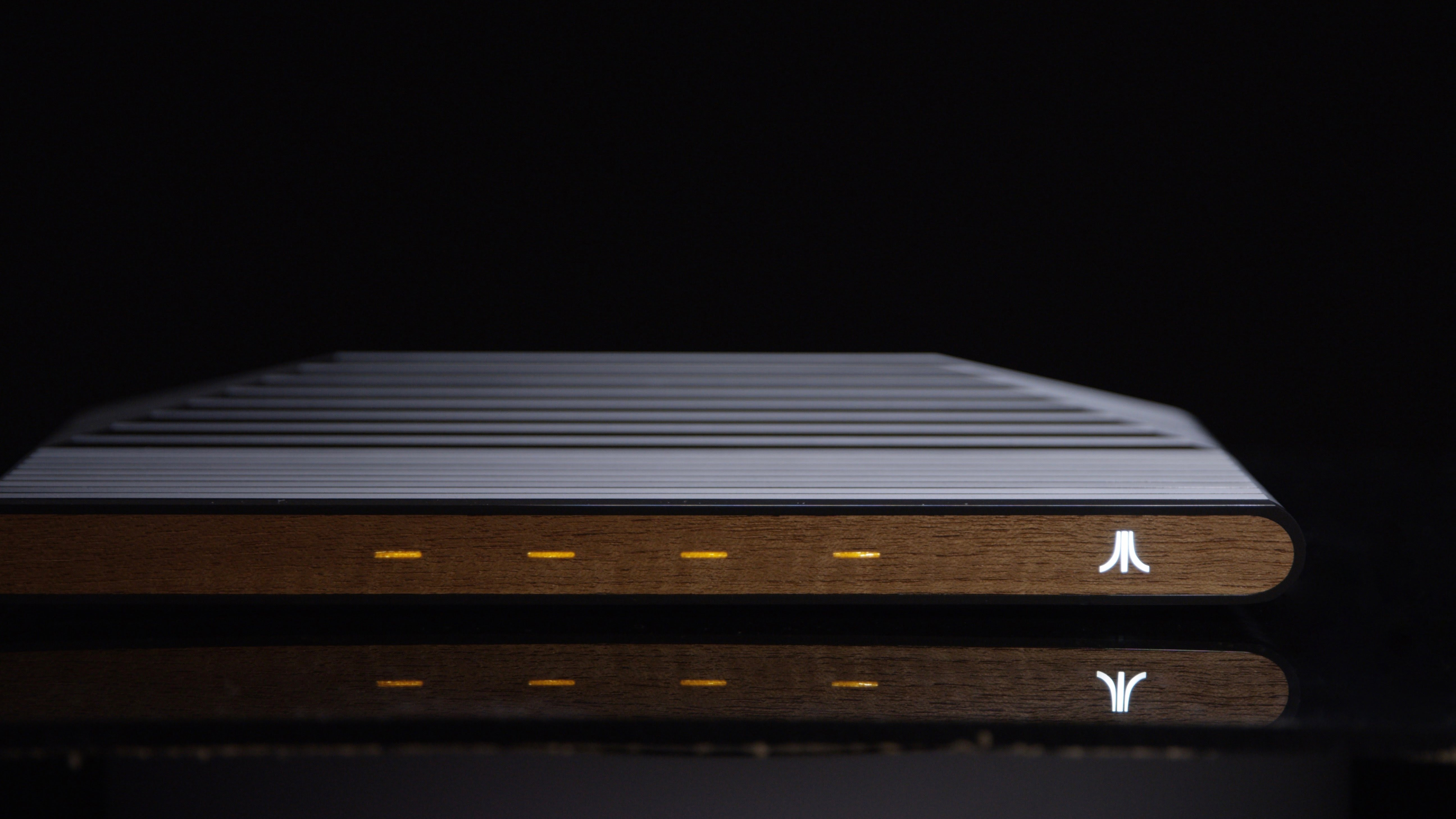
Atari made headlines today when it announced the first real details about the Ataribox, its first home console in over two decades. The console will run on a Linux PC platform, come stocked with a mid-grade custom AMD processor and cost, believe it or not, between $250 and $300 (around £185 and £220, AU$300 and AU$380) – just as much as a brand-new Xbox One S or a PS4 Slim.
The idea, Atari stated in a press release, is to create a console that goes beyond gaming. Not only will it play old games, but it will play new games, too, as well as stream shows and movies, access applications, log onto social networks, browse the web and stream music.
It’s a strange direction for the company, and even stranger considering that companies like Ouya and Valve have tried this in the past five years and weren’t met with much success.
And while I understand the reason to the madness here – Atari wants to create a modern console that will have all the customizability of a PC but still compete with the PS4 and Xbox One – I can’t help but feel that Atari is chasing two rabbits and bound to catch neither.

To catch a rabbid … er, rabbit
I’ll apologize for the truisms ahead of time, but honestly, I’m not sure there’s a better way to explain why this is such a bad idea than referencing traditional wisdom.
“If you chase two rabbits, both will escape.”
Russian proverb ... or Confucius?
There’s an old saying that goes, “If you chase two rabbits, both will escape.” Some think the saying is Russian in origin, others think it could be from Confucius. It doesn’t really matter who came up with it. The idea is timeless and transcends cultures: If you try to do two things simultaneously, it’s very likely that you’ll fail at both.
An Atari console that will play some old Atari games and some newer indie games, on top of offering an open-source operating system for people who like tweaking consoles, is seemingly trying to capture three different audiences with the same product – a product that could cost more than either the Xbox One or the PS4.
Get daily insight, inspiration and deals in your inbox
Sign up for breaking news, reviews, opinion, top tech deals, and more.

Sure, there’s no harm in adding features that enhance a product, but piling on multiple features in an attempt to copy something that’s working well elsewhere obfuscates the purpose of the product. In short, haphazard design will absolutely sink a product.
If this were a unique and novel idea that no company had ever tried before, I’d be behind it 100% – as a futurist I see the need to explore new product spaces. But this is, in so many ways, almost identical to what Valve imagined four years ago with its Steam Machine program, essentially a legion of low-end PCs that could live in the living room.
Steam Machines weren't a failure ... but they’re not exactly the kind of products Atari should be eager to replicate four years after a company like Valve tried it and didn’t succeed.
In case you’ve forgotten what they were, Steam Machines were console-sized PCs. They could play most games at medium or low specs, and even allowed you to stream games locally from your high-powered gaming PC in the other room.
They offered streaming services and web browsers, applications and a music player – heck, Valve even developed its own flavor of Linux called steamOS to tie the proverbial room together.
While the results of Valve’s experiment weren’t all bad (I mean, the Steam Controller is still actually a neat peripheral), these products weren’t flying off shelves. In fact, of all the manufacturers who initially signed up to be part of the program, only one or two have returned to make a sequel to their first device in the last few years.
Steam Machines weren't a failure ... but they’re not exactly the kind of products Atari should be eager to replicate four years after a company like Valve tried it and didn’t succeed.

A bird in the hand is worth two in the Bush(nell)
The silver lining to the situation is that the console’s just getting into development now. Atari has yet to launch its IndieGoGo crowdfunding campaign for the Ataribox, and we’re at least six months away from the hardware’s Spring 2018 launch window.
It’s a silver lining because there’s still time for Atari to shape the Ataribox into something gamers want – not a clone of a Steam Machine, not an Ouya 2.0, but a console that’s hyper-focused on appeasing one set of gamers, not conquering the whole kingdom.
Because, look, if Atari doesn’t do that, the Ataribox is doomed to fail.
The irony in all this is that it’s coming from Atari, the company that, 20 years ago, was all too happy to copy what Nintendo and Sony were doing.
Remember the Atari Lynx, the system that tried to out-Gameboy the Gameboy? Remember how utterly awful the Atari Jaguar CD fared against the original PlayStation and SEGA Saturn? What makes Atari think the Ataribox is going to fare any differently this time around?
Drop the specs, slash the price, find some partners, usher in a new era of accessible 8-bit games and give gamers the tools to make it.
I’m not saying that Atari has to copy any existing console. I’m not saying that Atari needs to do anything radically different, either. But look, Atari, if you’re going to get back into the hardware game after all this time, you probably shouldn’t do the exact thing Valve did two years ago with the added bonus of old Atari games. That’s not going to move consoles.
So what can Atari do to make this kernel of a good idea a success?
Drop the specs, slash the price, find some partners, usher in a new era of accessible 8-bit games and give gamers the tools to make it. You can certainly have a platform chock-full of new, awesome games alongside all the arcade classics if you aren’t afraid to give gamers (the people who should be your primary customers) the tools they need to make games for themselves.
Target gamers. Not media enthusiasts, Linux users, Xbox/PS4 fans or anyone else. Because one gamer in the hand, Atari, is worth two in the bush.
Nick Pino is Managing Editor, TV and AV for TechRadar's sister site, Tom's Guide. Previously, he was the Senior Editor of Home Entertainment at TechRadar, covering TVs, headphones, speakers, video games, VR and streaming devices. He's also written for GamesRadar+, Official Xbox Magazine, PC Gamer and other outlets over the last decade, and he has a degree in computer science he's not using if anyone wants it.
